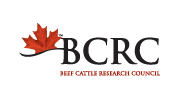Development of native and tame forage varieties and mixtures for improved forage and environmental productivity and resilience
| Project Code: | FRG.01.17 |
| Completed: | In Progress. Results expected in March 2023. |
Project Title:
Development of native and tame forage varieties and mixtures for improved forage and environmental productivity and resilience
Researchers:
Mike Schellenberg Ph.D. and Bill Biligetu Ph.D. mike.schellenberg@agr.gc.ca
Mike Schellenberg Ph.D. (Agriculture and Agri-Food Canada Swift Current); Bill Biligetu Ph.D. (University of Saskatchewan); Jill Bainard Ph.D., Luke Bainard Ph.D., Kerry LaForge (AAFC Swift Current); Eric Lamb Ph.D. (University of Saskatchewan), Natyanda Khanal Ph.D. (AAFC Beaverlodge), Mae Elsinger (AAFC Brandon), Annie Claessens Ph.D. (AAFC Quebec City), Yong-Bi Fu Ph.D. (AAFC Saskatoon), Darren Bruhjell (AAFC Edmonton), Joseph Robins Ph.D. (United States Department of Agriculture), Emma McGeough Ph.D. (University of Manitoba)
Background:
The beef industry needs tame and native forage varieties with improved yield, nutritional quality and persistence. However, Canada’s forage seed market is small, and economic margins from forage seed sales are not adequate to encourage seed companies to invest in forage breeding and development work. Consequently, the beef industry has been investing in these activities under both the first and second Beef Science clusters. In addition to breeding, long-term mixed plant stands have been established to study changes in plant communities, carbon sequestration, and soil microbiology over time.
Objectives:
To evaluate and develop new varieties of meadow brome, orchardgrass, and tall fescue and continue advancement of native plant breeding. Researchers will also do genomic prediction of alfalfa germplasm for high yield, regrowth, and quality as well as assess the diversification of existing and newly seeded plant mixtures and provide scientific data regarding soil carbon sequestration and soil biodiversity benefits
What They Will Do:
Tame forage breeding will continue (selecting meadow brome for yield, regrowth, plant height and quality) and expand (selecting tall fescue for winter hardiness and leaf palatability, and orchardgrass for increased water-soluble carbohydrate levels to improve animal productivity and plant stress tolerance). A winter hardy orchardgrass cultivar developed in Utah will be evaluated in several locations (Lethbridge, Swift Current, Brandon, Saskatoon, Beaverlodge) to study genotype and environment interactions.
Genomic tools currently being studied in crested wheatgrass will be expanded to alfalfa to look for markers for yield, regrowth, and quality. They’ll compare genomic to traditional breeding strategies to compare accuracy and rate of genetic improvement. They’ll look at whether adding forbs (meadow yarrow, wild sunflower, cone flower, prairie flax and winterfat) to existing native forage stands (western wheatgrass, side oats grama, nodding brome, blue bunch wheatgrass, little blue stem and purple/white prairie clovers (established in monocultures, 2-, and 7-way mixtures) in Lethbridge, Brandon and Swift Current will improve carbon sequestration, soil microbial and pollinator diversity, and forage production and stand stability. The best mixtures will be established at new sites (Brandon, Swift Current, Beaverlodge and Saskatoon) to look at additional environments.
Work to improve seed production in plains rough fescue will continue, as will improvement of purple and white prairie clovers, side-oats grama, and winterfat. A long-term study of sainfoin persistence on pasture will compare Mountainview and Melrose in mixtures with meadow brome, hybrid brome and crested wheatgrass at two harvest frequencies on self-reseeding, yield, regrowth, quality and soil nutrients in Brandon, Swift Current and Saskatoon.
Implications:
This project will develop higher yielding, nutritious tame and native forage varieties and mixtures for cow-calf producers across Western Canada. It will generate additional data regarding the role of native forage species and rangelands in supporting soil carbon sequestration, soil health and plant and pollinator biodiversity.








